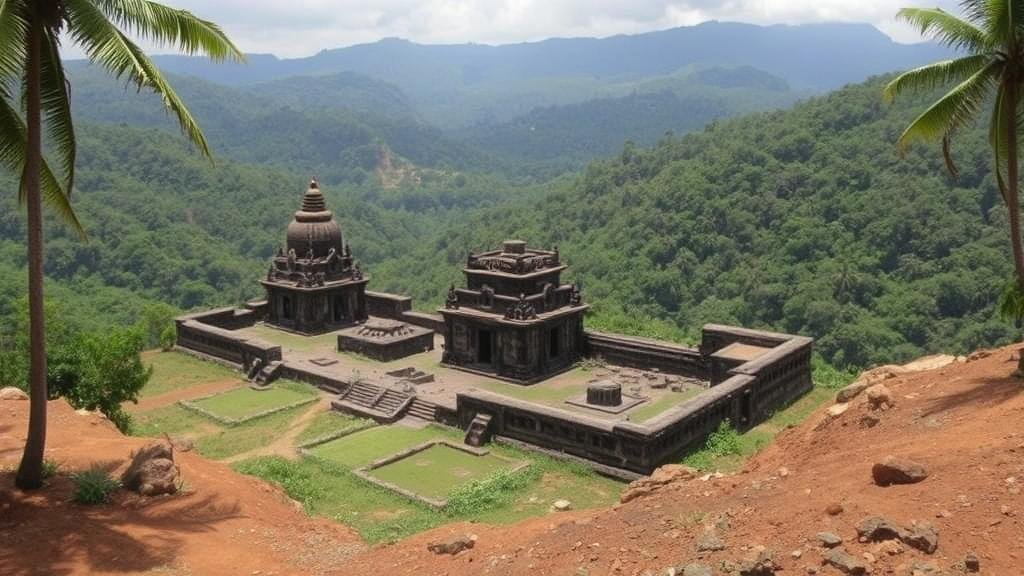Exploring the rugged interior of Sri Lanka for hidden remnants of early Sinhalese capitals.
Exploring the Rugged Interior of Sri Lanka for Hidden Remnants of Early Sinhalese Capitals
Sri Lanka, an island nation in South Asia, is rich in history and culture, with its rugged interior serving as a testament to the ancient Sinhalese civilization. This article delves into the remarkable remnants of early Sinhalese capitals tucked away amidst the islands verdant landscapes, revealing not only architectural grandeur but also the socio-political dynamics of the time.
A Glorious Past: The Rise of Sinhalese Capitals
The Sinhalese people, one of the main ethnic groups in Sri Lanka, established several influential capitals throughout their rich history. Among the most prominent were Anuradhapura and Polonnaruwa, both of which played critical roles from the 3rd century BCE onwards. Anuradhapura, founded around 377 BCE, served as the first capital and is famed for its monumental stupas and advanced irrigation systems.
Polonnaruwa rose to prominence later, around the 11th century, after the fall of Anuradhapura. This city showcased advances in urban planning and architecture, with impressive structures such as the Gal Vihara, a rock temple with finely carved Buddhas.
Unearthing Historical Sites: Key Locations
- Anuradhapura: This UNESCO World Heritage site is central to understanding Sinhalese culture. The Sacred Bo Tree, believed to be a sapling of the original Tree of Enlightenment, attracts thousands of pilgrims annually.
- Polonnaruwa: Another UNESCO site featuring the Royal Palace and the impressive Gal Vihara rock sculptures, these remnants speak volumes of the artistic achievements of the Sinhalese.
- Sigiriya: Often referred to as Lion Rock, this ancient rock fortress, built during the 5th century CE, combines magnificent architecture with stunning landscapes.
The Architectural Marvels of Anuradhapura
The architecture of Anuradhapura reflects the sophisticated engineering capabilities of the Sinhalese. Notable structures include the Ruwanwelisaya, a massive stupa standing at 55 meters in height. Its construction, dating back to the 2nd century BCE, is a testament to the religious dedication and architectural ingenuity of the era.
Also, the citys water management system, featuring reservoirs and canals, illustrates their understanding of hydrology, crucial for agricultural sustainability. The largest reservoir, the Basawakkulama, can still be seen and used today.
Polonnaruwa: A Glimpse of Urban Planning
Moving to Polonnaruwa, visitors can appreciate the city’s well-organized layout, which differs from Anuradhapuras sprawling nature. Royal Palace complex, with remnants of its once-grand buildings, and the audience hall showcase the political significance of this capital. The Lotus Pond, an ornamental pool reflecting the artistry of the era, is another highlight.
Statistically significant, Polonnaruwa housed a population estimated at over 50,000 at its peak, reflecting its status as a bustling administrative center.
Modern-Day Exploration and Preservation Efforts
Today, these ancient capitals are not only tourist attractions but also subjects of ongoing archaeological studies and conservation efforts. The Archaeological Department of Sri Lanka actively works to restore and maintain these historical sites to preserve the islands rich cultural heritage.
Plus, local community engagement plays a pivotal role in safeguarding these sites, allowing residents to become guardians of their history. Tourists are encouraged to visit these locations to stimulate the local economy while also gaining knowledge about the Sinhalese heritage.
Concluding Thoughts: The Legacy of Sinhalese Civilizations
Exploring the rugged interior of Sri Lanka provides a profound insight into the early Sinhalese capitals’ beauty and significance. Each site offers a narrative of resilience, innovation, and spirituality, echoing through the ages. Visitors are not merely observers but participants in a timeless story that connects the past with the present.
As you plan your journey through Sri Lanka’s historical landscape, let the stories of Anuradhapura and Polonnaruwa guide you, reminding you of the rich tapestry that is Sri Lankan heritage.



